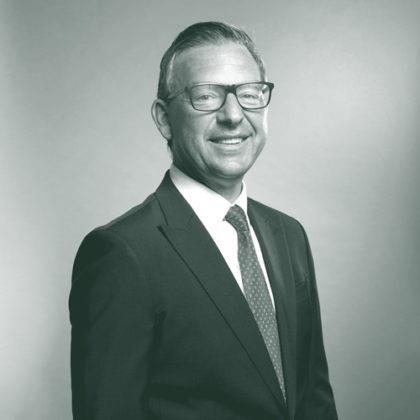A single P&L at broker McGill and Partners includes its expanding facultative team.

Are the hard market dynamics seen at recent renewals spilling over into opportunities for the direct and facultative (D&F) market? The answer is yes, emphasise two senior brokers at McGill and Partners.
“Absolutely it has,” says Paul Summers, global head of facultative reinsurance, McGill and Partners. “That can be driven by terms being too punitive, so retentions increase. It could also be a result of looking for different ways of doing things in a market that’s tough on the treaty side, to solve the same issues, such as removing volatility from the balance sheet.”
The D&F market, despite being another facet of reinsurance, has frequently been poorly understood by those on the treaty side, he suggests. This is changing, and facultative buying is being seen as strategic rather than just transactional.
“We would prefer to work with those clients who see the value of fac”, and are more interested in its value, than those clients who may buy a lot of fac in one given year, but then switch it off next year, depending on market conditions,” says Lee Day, global fac strategy leader, McGill and Partners.
The strategy is about understanding the client’s needs across product types, rather than thinking transactionally, Summers explains. “The way we like to work with clients is to use facultative reinsurance as a strategic tool that complements treaty programme,” he says.
“That can be to drive growth, reduce volatility, and get into new lines of business. Of course, transactional business is what we do many cases, but we want to be proactive enough to articulate what we think the market can do to help a client,” he adds.
What makes this easier, the brokers underline, is one major tenet to McGill’s firm-wide approach: a single Profit and Loss centre (P&L), across its various broking teams, globally. Brokers typically have several P&L centres by geography, as well as by business classes. This can drive internal competition but can also cause friction and skewed incentives, they suggest.
“There is a fascination about building a business from scratch. We’ve got a blank sheet of paper, we’re not inhibited by other profit centres, and we’ve had the freedom to pick the team,” Summers says.
“We make sure our new partners we bring in buy into that single P&L, because it’s such a huge differentiator for us. Everyone’s in it together, incentivised to find the best deals, and that builds its own culture. If we produce fac revenue in Sydney, it goes into that one global P&L; if we generate US revenue, likewise,” he adds.
This strategy has also led to more convergence between markets and sources of capital, such as bringing Insurance Linked Securities (ILS) capacity into the traditional D&F market.
“One of the benefits we have is access in all parts of the capital chain. We’re not restricted to working with the traditional fac markets. We work close to our treaty colleagues, we work closely with funds and ILS markets,” Summers says.
“One of the examples, without giving our secrets away, was when we used D&F capacity, but transformed ILS capacity behind it. That’s an example of the thought process that we’re going through to address a client’s problems in challenging times,” he adds.
Day, like Summers, joined from much bigger rival reinsurance broker Guy Carpenter. Both are keen to stress the startup nature of the company. While McGill and Partners is in year four, founded in 2019, it’s fac arm has been broking for three years. Both of them began building the business as the pandemic set in, in early 2020.
“My first day was in that first week of lockdown. There was certainly some trepidation when lockdown was announced and we were building a business from scratch. We were we were fortunate in that as a recent startup there was a big emphasis on cloud-based technology, which enabled us to start remotely, efficiently,” Summers says.
Day continues. “Reacting to the pandemic was a big opportunity, and being able to trade wherever we need to. We had a plan, but the real attraction was to build a platform without the constraints of a large organisation with legacy business.
“Our original plans were more North American centric. We’ve had exponential growth, above and beyond what we anticipated, and in areas for which we didn’t plan. Growth has continued beyond expectations and we’ve continued to be flexible,” he adds.










No comments yet